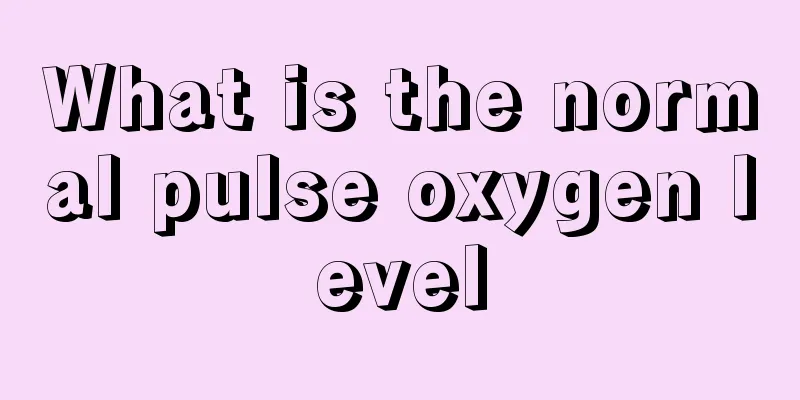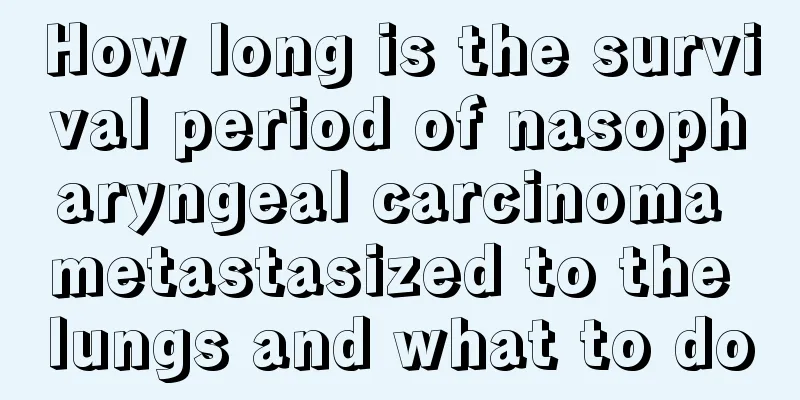What is the normal pulse oxygen level

|
People cannot survive without oxygen, so after the human body absorbs oxygen, it will be transmitted to various parts of the body through the blood, thereby increasing the oxygen content in the human blood. Generally speaking, the higher the oxygen content, the stronger the body's digestion and absorption function will be, and the stronger its metabolic capacity will be. The oxygen level in your blood can be measured using a pulse oximeter. So, what is a normal pulse oximeter? Humans rely on oxygen to survive. After oxygen is inhaled from the lungs, it enters the blood through the capillaries and is transported by the blood to various organs or cells in the body for use. The higher the oxygen content in the blood, the better the person's metabolism. Of course, high blood oxygen content is not a good thing. The blood oxygen in the human body has a certain saturation. Too low will cause insufficient oxygen supply to the body, and too high will cause aging of cells in the body. Both O2 and CO2 exist in the blood in two forms: physically dissolved and chemically bound. Gas and hemoglobin exist in the form of complexes. If the oxygen concentration is high, hemoglobin will complex with oxygen. If the carbon dioxide concentration is high, hemoglobin will complex with carbon dioxide. In the body's arterial blood, the oxygen concentration is high, and in the body's venous blood, the carbon dioxide concentration is high. Oxygen partial pressure (PO2) refers to the tension generated by oxygen molecules physically dissolved in plasma (so it is also called oxygen tension). In 100 ml of blood at 37°C, oxygen dissolved in a physical state can produce an oxygen partial pressure of 0.133 kPa (1 mmHg) for every 0.003 ml. When a normal person is at rest and breathes sea level air, the oxygen physically dissolved in the arterial blood is about 0.3 ml%, the partial pressure of oxygen in the arterial blood (PaO2) is about 13.3 kPa (100 mmHg); the normal partial pressure of oxygen in the venous blood (PvO2) is about 5.32 kPa (40 mmHg). PaO2 mainly depends on the level of alveolar oxygen partial pressure (PAO2), the amount of oxygen diffused into the blood through the alveolar membrane, and the ratio of alveolar ventilation to pulmonary blood flow. If the oxygen partial pressure of the outside air is low or alveolar ventilation is reduced, the alveolar oxygen partial pressure will decrease; or if diffusion disorder or ventilation/blood flow imbalance causes an increase in the functional or anatomical shunt of pulmonary arteriovenous blood, PaO2 may decrease. Oxygen content refers to the number of milliliters of oxygen contained in 100 milliliters of blood, including the oxygen actually bound to hemoglobin and the oxygen dissolved in plasma. Normal arterial blood oxygen content is about 19.3 ml%, and mixed venous blood oxygen content is about 12 ml%. The oxygen content in the blood mainly depends on PaO2 and the quality and quantity of hemoglobin. A significant decrease in PaO2 or a decrease in the ability of hemoglobin to bind oxygen, which reduces hemoglobin saturation, or a decrease in the amount of hemoglobin per unit volume of blood, can all reduce the oxygen content. The oxygen content depends on the amount of hemoglobin in a unit volume of blood and its ability to bind oxygen. If the hemoglobin content decreases (anemia) or the ability of hemoglobin to bind oxygen decreases (such as methemoglobin, carboxyhemoglobin), the oxygen capacity decreases and the oxygen content also decreases. If the amount and properties of hemoglobin per unit volume of blood are normal, the oxygen saturation of hemoglobin will decrease only due to the decrease in oxygen partial pressure. At this time, the oxygen content is reduced, but the oxygen capacity is normal. Oxygen capacity refers to the amount of oxygen bound to hemoglobin in 100 ml of blood in vitro when the oxygen partial pressure is 19.95 kPa (150 mmHg), the carbon dioxide partial pressure is 5.32 kPa (40 mmHg), and the humidity is 38°C. Under the above conditions, normal hemoglobin can bind 1.34 to 1.36 ml of oxygen per gram. If calculated based on 15 grams of hemoglobin per 100 ml of blood, the oxygen capacity of arterial and venous blood is approximately 20 ml%. Oxygen saturation refers to the percentage of hemoglobin that is saturated with oxygen. One gram of hemoglobin can combine with a maximum of 1.36 milliliters of oxygen, and the oxygen saturation reaches 100%. Oxygen saturation can be expressed by the following formula: Oxygen saturation (%) = actual oxygen bound to 1 gram of hemoglobin (ml) / 1.36 (ml) × 100 Normal arterial oxygen saturation is about 95-97%, and mixed venous oxygen saturation is about 75%. |
<<: What is a normal pulse rate for young people
>>: Where should I massage the soles of my feet if I have a bad stomach?
Recommend
Is frequent farting an early symptom of rectal cancer?
Is frequent farting an early symptom of rectal ca...
Zika virus is easily transmitted, common knowledge about diagnosis and symptoms
Zika virus is a highly contagious and epidemiolog...
Why do I feel so weak?
Many people often feel weak all over. They should...
Combining Chinese and Western medicine to treat pancreatic cancer is effective
Mr. Li Zhenguo, 72 years old, was born in Zhangji...
Reasonable diet for lung cancer patients after surgery
Most patients will choose surgery to treat lung c...
Can malignant glioma be cured if it is discovered early?
For us, having a tumor is undoubtedly a bolt from...
What is the relationship between ovarian cancer genes and disease?
Ovarian cancer is one of the most common tumors o...
The reason for cupping blisters
Cupping causes blood blisters. For many friends w...
What to do with cavity ulcer
The symptom of oral ulcer is mostly caused by the...
Will vomiting definitely occur if gastric bleeding occurs?
Under normal circumstances, we will not have vomi...
What to do when you are under great pressure and nervous
There are many things to do in life, not just wor...
Is it okay to eat melon seeds every day
Melon seeds are a kind of snack for leisure and e...
What are the causes of pain on the side of the chest
Pain on the side of the chest can seriously affec...
What medicine is good for tongue cancer?
What medicine is good for tongue cancer? Although...
Experts help you understand what glioma is
Glioma, a strange word, is slowly approaching hum...









